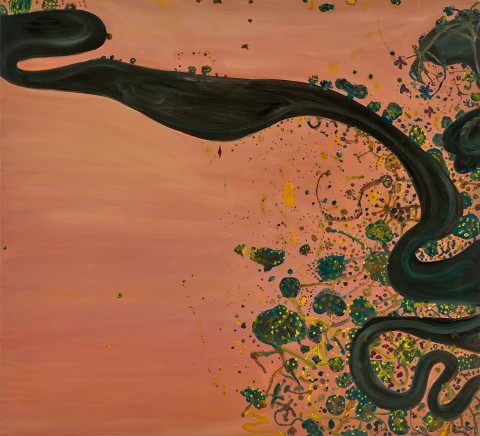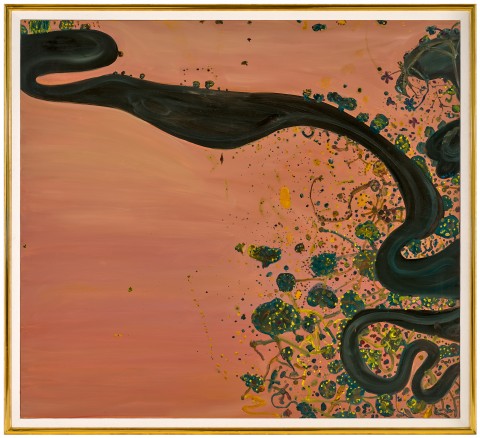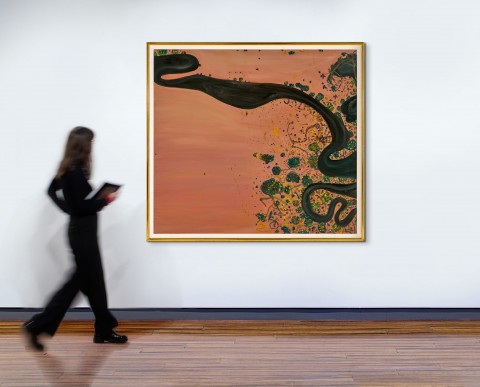RIVER AND WATTLE, 1982
JOHN OLSEN
oil on canvas
152.0 x 167.5 cm
signed and dated lower right: John Olsen 82
inscribed with title verso: River & Wattle
Gift of the artist to his sister, Mrs Harold Collins, Melbourne
Sotheby's, Melbourne, 29 November 2004, lot 16
Gould collection, Melbourne (label attached verso)
The Gould Collection of Important Australian Art, Deutscher and Hackett, Sydney, 15 March 2017, lot 20
Private collection, Sydney
John Olsen, Australian Galleries, Melbourne, 19 – 31 July 1982, cat. 5
Australian Landscape, Gould Galleries, Melbourne, 12 May – 2 June 2007, cat. 27 (illus. in exhibition catalogue)
The Director's Choice 2010, Gould Galleries, Melbourne, 6 May – 5 June 2010, cat. 16 (illus. in exhibition catalogue)
Olsen (2).jpg
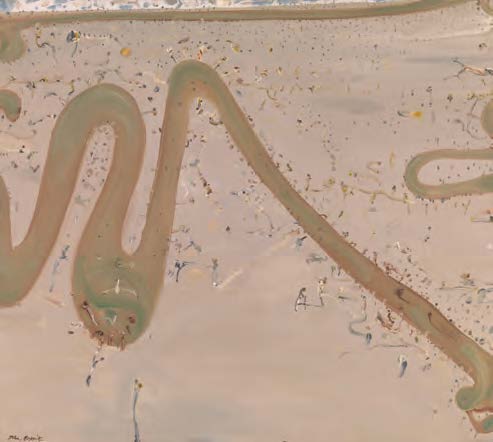
One of Australia’s most celebrated artists, John Olsen enjoyed a career that spanned more than seven decades and witnessed the production of a large oeuvre of paintings, drawings and works in other media that present a vivid and unique interpretation of the Australian landscape.
As a young man Olsen travelled to Europe spending much of his time in Spain absorbing the rich historical and contemporary influences of art, culture and landscape there, and distilling them into a pictorial language that was entirely original. Early on he also adopted Paul Klee’s notion of drawing as ‘taking a line for a walk’, and from that point on, the dancing calligraphic line has been a distinctive element of his work. Olsen extended this concept however, taking his line – whether drawn or painted – on a walk through the landscape and using it to record the experience of being in the natural environment rather than just looking at it.1
Talking about the You Beaut Country series of the mid-1960s – so wonderfully titled and so obviously Australian – Olsen explained: ‘... I also wanted to really come to terms with the experience of a total landscape. Not like there is the foreground, there is the middle distance and there is the horizon. I wanted that overall feeling of travelling over the landscape. There you can see the dry creek beds, the nervous system … which when you are just on the ground you don’t witness at all. Then you begin to somehow see the wholeness … It gives you a collective feeling of what’s happening … It’s more than the present, it’s the past and projects itself into the future.’2
Painted in 1982, River and Wattle is a landscape that reveals an artist at the height of his powers. While the ground of the painting is rendered in oil, the effect is delicate, the usual opacity of the medium replaced with subtle
Olsen (3).jpg
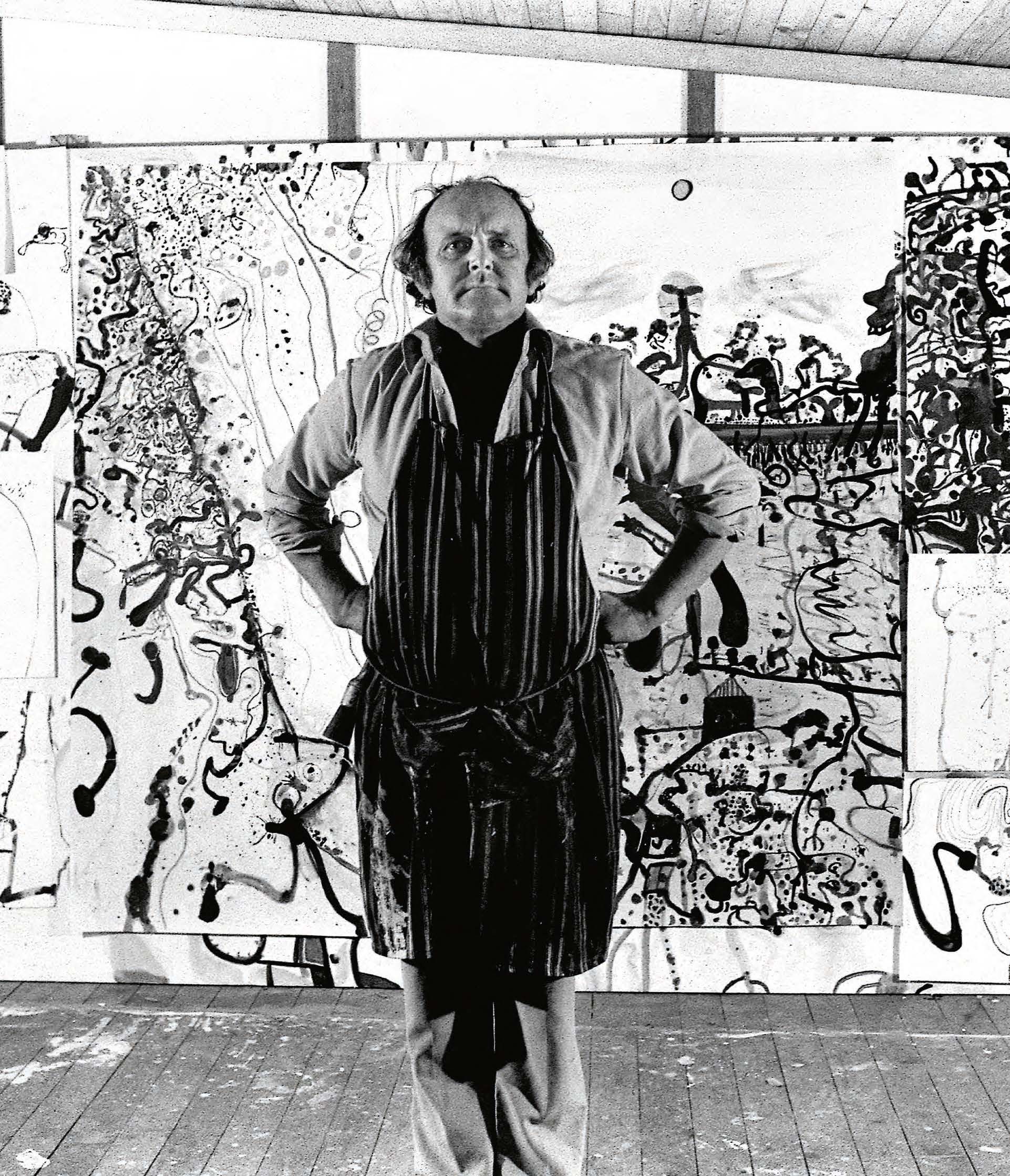
brushwork and tonal variations that enliven the surface. The river is viewed from above, a dark, solid but sinuous form meandering across the canvas and creating the illusion of vast space. This bird’s eye view is combined with the close-up study of plant, insect and bird life depicted in a riotous jumble of lines, dots and patterns. Vivid yellow dots describe the springtime wattle and amidst the conglomeration of abstract forms and gestural marks that make up this image, a bird in its nest in the top right-hand corner is a delightful detail.
In this brilliant merging of the monumental and the miniature, River and Wattle also reflects the experience of Olsen’s extensive journeys through remote parts of Australia during the 1970s – in particular his visit to Lake Eyre in 1974 – during which he was able to fully comprehend the complexity of the natural world, understanding it as both a physical structure as well as a diverse habitat3, and expanding his ability to describe this totality in visual terms.
1. See Hart, D., John Olsen, Craftsman House, Sydney, 2000, p. 38
2. Hurlston, D. and Edwards, D. (eds.), John Olsen – The You Beaut Country, National Gallery of Victoria, Melbourne, 2016, p. 10
3. Hart, op. cit., p. 123
KIRSTY GRANT
